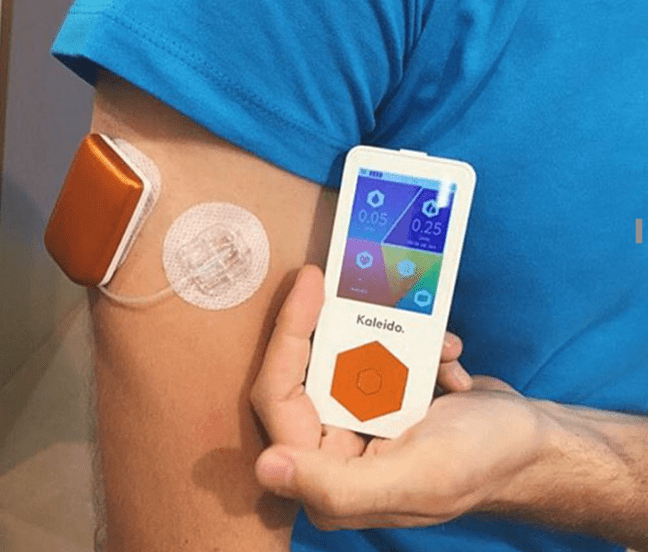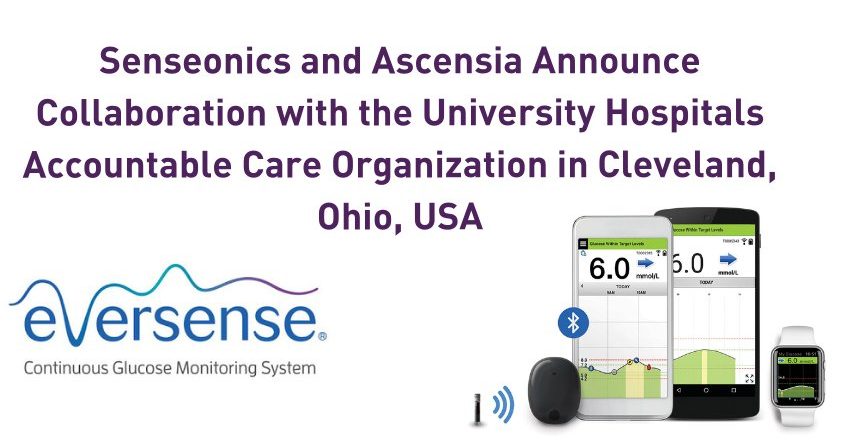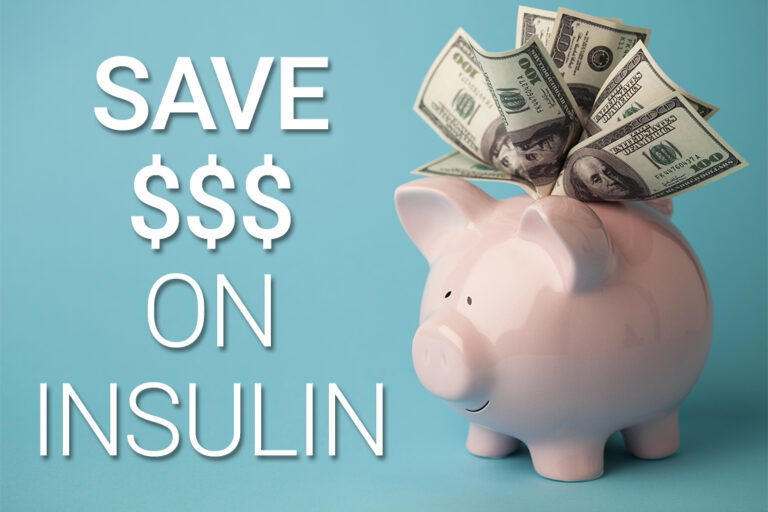This mini insulin pump makes people with diabetes just a little less patient was published by Mathijs Steinberger for AD.nl, 19 August 2021. A Utrecht company, ViCentra, has great expectations of a self-designed mini-pump that works simply and does not look medical.
 The large, often eye-catching insulin pumps that patients constantly carry with them prompted two British engineers to start working on their own design in 2013. They were convinced that it had to be smaller and more user-friendly. They settled in Utrecht, which was the start of the ViCentra.
The large, often eye-catching insulin pumps that patients constantly carry with them prompted two British engineers to start working on their own design in 2013. They were convinced that it had to be smaller and more user-friendly. They settled in Utrecht, which was the start of the ViCentra.
The company succeeded in making a mini-pump mechanism, which means that the pump with insulin measures only 5 by 3 centimeters. “By comparison: the most commonly used pump is about five times as large,” says CEO Frans Cromme. Our Kaleido pump set weighs only 19 grams and can be worn on the skin – or women if they want in their bra. Some parts have a thickness of less than 1 millimeter.”
A lot of attention has been paid to the design, so that the device does not look medical. Users can choose from ten fresh colors. The pump can be operated with a small remote control that easily fits in a pocket.
The Kaleido was introduced in 2018. As the team was not yet completely satisfied, improvements were made. Next month, the first users will start again with a product that now meets all requirements, says Cromme.
The product has been approved and is reimbursed by health insurers. Everyone in this industry wants to move to wearable, small tech and we’ve succeeded.”
Read more: This mini insulin pump makes people with diabetes just a little less patient
Senseonics in pact with Cleveland’s UHACO to offer CGM system for Medicare patients, as reported by SeekingAlpha.com, 13 September 2021.
 From September 2021, the University Hospitals Accountable Care Organization (UHACO) in Cleveland, Ohio, will offer the Eversense CGM System for its patients covered by Medicare as part of an agreement with the manufacturer Senseonics Holdings. Eversense CGM System developed by Senseonics will, therefore, be used in eligible patients with type 1 diabetes or type 2 diabetes.
From September 2021, the University Hospitals Accountable Care Organization (UHACO) in Cleveland, Ohio, will offer the Eversense CGM System for its patients covered by Medicare as part of an agreement with the manufacturer Senseonics Holdings. Eversense CGM System developed by Senseonics will, therefore, be used in eligible patients with type 1 diabetes or type 2 diabetes.
“We are excited to offer Eversense to our ACO patients with diabetes. Supplying tools for effective glucose management allows us to meet the Standards of Care for patients using insulin as outlined by the American Diabetes Association,” noted Betul Hatipoglu, UHACO’s head of endocrinology and diabetes.
Read more: Senseonics Announces a Collaboration with University Hospitals Accountable Care Organization
Treatment of diabetic kidney disease ‘requires multiple drugs’ was written by Regina Schaffer for Healio.com/endocrinology, 13 September 2021.
 Multiple pathophysiologic abnormalities contribute to the development and progression of diabetic kidney disease, and early intervention with triple or even quadruple therapy is needed to prevent complications, according to a speaker.
Multiple pathophysiologic abnormalities contribute to the development and progression of diabetic kidney disease, and early intervention with triple or even quadruple therapy is needed to prevent complications, according to a speaker.
In addition to maximally tolerated angiotensin-converting enzyme (ACE) inhibitor or angiotensin receptor blocker therapy, treatment combining an SGLT2 inhibitor, the nonsteroidal mineralocorticoid receptor antagonist finerenone (Kerendia, Bayer) and potentially a GLP-1 receptor agonist could serve as an optimal solution for cardiovascular and renal protection in type 2 diabetes, Ralph A. DeFronzo, MD, professor of medicine and chief of the diabetes division at the University of Texas Health Science Center at San Antonio, said during a presentation at the Heart in Diabetes conference.
DeFronzo cautioned that combination therapy in DKD is controversial — currently, there are no randomized controlled trial data assessing outcomes with combination therapy.
“Because we have so many abnormalities at the level of the kidney contributing to the pathophysiology, in my opinion, we need to think seriously about combination therapy, and we need to be thinking about combination therapy from the beginning,” DeFronzo said. “I have taken care of people who are on dialysis and people who are blind … and we have got to stop the disease. Sure, lower the glucose. But if you cannot lower the glucose and the disease has started, then we need to intervene. I would favor using three or all four of the drugs here, even though we do not have the clinical evidence to support that.”
Read more: Treatment of diabetic kidney disease ‘requires multiple drugs’
New Medicare Program Offers $35 Max Copay for Insulin was published by TCOYD, 13 September 2021.
 CMS (the Centers for Medicare and Medicaid Services) recently launched a new program called the Medicare Part D Senior Savings Model Program to test the impact of offering Medicare beneficiaries 65 and older an increased choice of Part D plans with lower out-of-pocket costs for insulin. The program allows participating Part D plans to offer a broad set of insulins with no deductible and a max copay of $35 per month. The program will run through December 31, 2025, and if CMS decides to keep it, it’ll become a new standard benefit in all plans.
CMS (the Centers for Medicare and Medicaid Services) recently launched a new program called the Medicare Part D Senior Savings Model Program to test the impact of offering Medicare beneficiaries 65 and older an increased choice of Part D plans with lower out-of-pocket costs for insulin. The program allows participating Part D plans to offer a broad set of insulins with no deductible and a max copay of $35 per month. The program will run through December 31, 2025, and if CMS decides to keep it, it’ll become a new standard benefit in all plans.
The $35 copay applies to one month’s supply of insulin, within typical and standard doses set by plans and physicians. If someone uses several types of insulin or has multiple prescriptions for select insulins covered under the program, each prescription would have a max copay of $35 for one month’s supply. The program also includes coverage for the GLP1-RA/Basal Insulin fixed-ratio combination products Soliqua and Xultophy.
The following pharmaceutical manufacturers are participating in the Part D Senior Savings Program for coverage year 2022:
-
- Eli Lilly (Basaglar, Humalog, Humulin, Lyumjev)
- MannKind (Afrezza)
- Mylan/Viatris (Aspart, Semglee)
- Novo Nordisk (Fiasp, Levemir, Novolin, NovoLog, Xultophy)
- Sanofi-Aventis U.S. (Adlyxin, Admelog, Apidra, Lantus, Soliqua, Toujeo)
Read more: New Medicare Program Offers $35 Max Copay for Insulin
Gut bacteria may accumulate drugs, which could change their efficacy was written by Lori Uildriks for MedicalNewsToday.com, 16 September 2021.
 A laboratory study that appears in Nature found that gut bacteria can accumulate common drugs, which may alter bacterial function and activity and decrease the effectiveness of drugs. The clinical significance of these findings is unknown. Researchers need to conduct human studies to assess and categorize drug responses based on the composition of the gut microbiome to potentially individualize and optimize drug therapy.
A laboratory study that appears in Nature found that gut bacteria can accumulate common drugs, which may alter bacterial function and activity and decrease the effectiveness of drugs. The clinical significance of these findings is unknown. Researchers need to conduct human studies to assess and categorize drug responses based on the composition of the gut microbiome to potentially individualize and optimize drug therapy.
Gut bacteria produce approximately 95% of the serotonin in the body. Serotonin is a neurotransmitter in the brain that regulates both mood and gastrointestinal (GI) functioning. Environmental factors may induce changes to the microbiome as a response to diet, antibiotics, or disease. Nonantibiotic drugs can also alter gut microbiome composition and function.
Moreover, the gut microbiome can affect a person’s response to a drug. Gut bacteria can change the drug’s activity in the body, toxicity, or bioavailability, which is the extent and rate at which the drug enters the bloodstream.
Dr. Kiran Patil, contributing author and investigator at the MRC Toxicology Unit, commented on the unexpected interactions between bacteria and drugs accumulating in the bacteria, “This not only reduced drug availability but also the accumulated drug [changed] bacterial metabolism and the molecules they [secreted]. This has a knock-on effect on other bacteria in the community. Our study thus reveals a new dimension in the microbiome-drug interactions.”
Read more: Gut bacteria may accumulate drugs, which could change their efficacy
Is Carbonated Water Just as Healthy as Still Water? was written by Christina Caron for TheNewYorkTimes.com, 14 September 2021. T1Ds often drink sugar free sodas … or switch off to unsweetened seltzer, to get the refreshing effects of carbonation. Is it healthy? Unsweetened carbonated water is a better choice than soda or fruit juice. But don’t overdo it, experts say.
 Crisp, bubbly and effervescent, carbonated water has become a daily ritual for many and a growing segment of the beverage industry, with yearly sales now topping $4 billion in the United States. For those who crave it, carbonated water offers a sensory experience that flat water cannot: There’s the satisfying snap as you pull back the tab on the can. The sound of the fizz as you unscrew the bottle cap to pour yourself a glass. The tingly sensation as the beverage hits your tongue, sometimes with a hint of “natural” flavor.
Crisp, bubbly and effervescent, carbonated water has become a daily ritual for many and a growing segment of the beverage industry, with yearly sales now topping $4 billion in the United States. For those who crave it, carbonated water offers a sensory experience that flat water cannot: There’s the satisfying snap as you pull back the tab on the can. The sound of the fizz as you unscrew the bottle cap to pour yourself a glass. The tingly sensation as the beverage hits your tongue, sometimes with a hint of “natural” flavor.
Still water is great for hydration, “but you would be surprised at the number of people who don’t like the taste and are unwilling to drink it,” said Anne Linge, a registered dietitian-nutritionist at the University of Washington Medical Center in Seattle. “Adding carbonation may make it more acceptable.”
More acceptable, perhaps, but also just as healthy?
Nutritionists agree that carbonated water (a category that includes seltzer water, which is artificially carbonated, and naturally sparkling water) is just as hydrating as regular water, however, tap water has the added benefit of fluoride, which helps prevent tooth decay.
“If you are using fluoridated water for brushing your teeth, cooking, and some of your hydration, you can also include sparkling water in your diet,” Ms. Linge said. But keep in mind that carbonated water is more acidic in our mouths than flat water. Bubbly water contains carbon dioxide, which is converted to carbonic acid when it mingles with saliva, lowering the pH level of your mouth.
“it would take quite a lot of consumption throughout the day to have damaging effects similar to what we’d see with fruit juice or soda,” said Dr. Brittany Seymour, an associate professor at the Harvard School of Dental Medicine and a spokeswoman for the American Dental Association.
The bottom line: Because carbonated water still has the potential to be erosive, think of it as a once-a-day treat rather than your main source of water, Dr. Seymour said.
Read more: Is Carbonated Water Just as Healthy as Still Water?


Is it possible to get the pump article translated to English?
Hi Kathy, there is an option on my screen to use a Google translate. If your browser doesn’t have that, perhaps try Google or Chrome? If not, let me know … thanks so much.
Chrome worked – thanks!
Hey, I am thrilled about the medicare insulin option. Maybe I can figure out how to get insulin at my local provider instead of mail order for a decent cost. Naw, probably not.
🙂